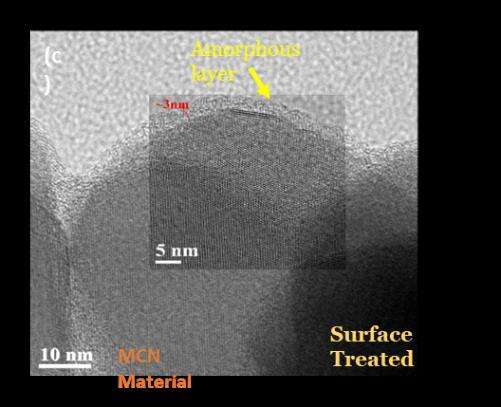
Suppression of Electrode Material Degradation Using Atomic Layer Modifications Techniques
Powering most currently used portable devices, batteries ushered electronics into a new era of mobile energy, directly supporting and influencing our daily lives. However, the ever-increasing demand for energy storage devices with improved performances and stability for transportation (electric vehicles), grid storage (power levelling), portable electronics (laptops, smartphones etc.) and implanted medical devices (Implantable Cardioverter Defibrillators, Pacemakers etc.) is challenging the scientific community to develop new chemistries and morphologies of electrode materials (EM) to move beyond current technology and its limited theoretical metrics toward electrochemical storage devices with higher energy density, superior power performance and significantly extended stability.
Understanding of fundamental degradation mechanisms of EMs, and their mitigation strategies, are challenged by constraints of the liquid electrolyte environment and the complexity of electrode/electrolyte interphase formation, namely the solid electrolyte interphase (SEI) layer which forms, grows, and changes (on the electrode interface) with battery usage. Accordingly, the research community is increasingly seeking new pathways to understand and control battery degradation, including new diagnostic and characterization methods (e.g., synchrotron and in-situ studies) as well as mitigation strategies (e.g., electrode surface treatments, electrolyte additives and artificial SEI layers).
In my poster I will demonstrate how surface modification of EMs, significantly suppress the degradation of the battery components (e.g. electrodes, and electrolyte) and facilitates long term stability of the electrochemical device. We modify the surface of the EMs by either thin protection layer applied on its interface (using atomic layer deposition- ALD), or by surface reduction of high voltage cathode materials (e.g. example of surface treated NCM in Figures bellow).


Powered by Eventact EMS